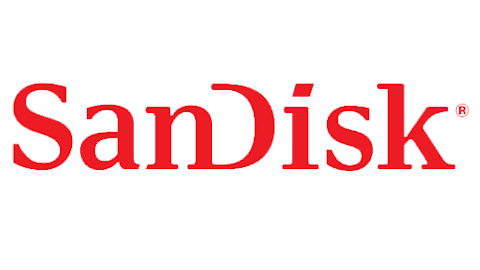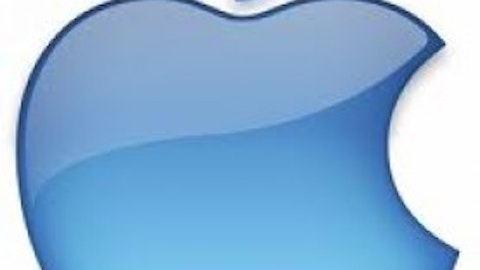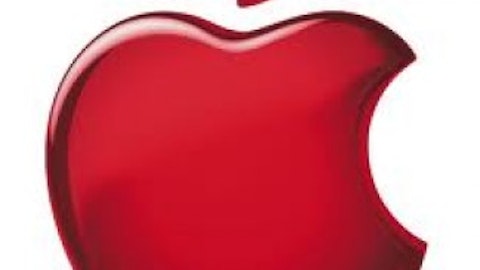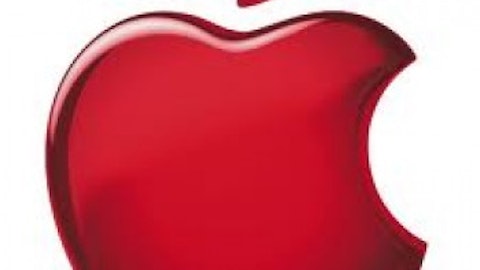As Apple Inc. (NASDAQ:AAPL)’s share price has dropped, some observers have compared the company to Microsoft Corporation (NASDAQ:MSFT). But perhaps that comparison is more aptly made in the other direction.
Microsoft Corporation (NASDAQ:MSFT) announced a reorganization on Thursday, with the goal of becoming a “devices and services” company. That sounds remarkably similar to the strategy long embraced by Apple Inc. (NASDAQ:AAPL).
Despite Apple’s recent decline, the company is still larger and more profitable than Microsoft Corporation (NASDAQ:MSFT). So, will Microsoft’s reorganization allow the Windows-maker to replicate Apple Inc. (NASDAQ:AAPL)’s success?
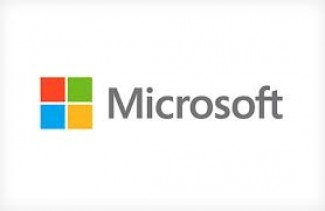
Under the new plan, Microsoft Corporation (NASDAQ:MSFT) is getting a new management structure — different business divisions are getting swapped around, split up and merged, and some executives are winning while others are losing. At the same time, it doesn’t look like there’s an heir apparent to Steve Ballmer (at least for now).
But why?
Business Insider’s Jay Yarrow does a solid job answering that question. Specifically, Yarrow cites Ballmer’s letter to shareholders, which explains Ballmer’s vision for the future of Microsoft:
This means as we, with our partners, develop new Windows devices we’ll build in services people want. Further, as we develop and update our consumer services, we’ll do so in ways that take full advantage of hardware advances, that complement one another and that unify all the devices people use daily. So right out of the box, a customer will get a stunning device that is connected to unique communications, productivity and entertainment services from Microsoft Corporation (NASDAQ:MSFT) as well as access to great services and applications from our partners and developers around the world.
Ballmer envisions a Microsoft Corporation (NASDAQ:MSFT) that, like Apple Inc. (NASDAQ:AAPL), offers connected devices with built-in services. A company that still utilizes a variety of different hardware manufacturers, but a more cohesive experience overall.
Of course, Thursday wasn’t the beginning — this transition has been taking place for over a year. Case in point, Microsoft Corporation (NASDAQ:MSFT)’s Surface tablet — the first Windows-based device the company built in-house. There’s also Microsoft’s retail strategy, with stores remarkably similar to Apple Inc. (NASDAQ:AAPL)’s.
Apple’s closed ecosystem
This shift is significant because Microsoft Corporation (NASDAQ:MSFT)’s basic philosophy has always stood in stark contrast to Apple Inc. (NASDAQ:AAPL)’s. From the early days of Apple and the original Macintosh, Steve Jobs pushed for a closed system — a tightly controlled hardware/software package. In contrast, Microsoft has always advocated an open system.
Steve Jobs’ biographer Walter Isaacson summarized the philosophical split in an interview with CBS:
[Steve Jobs and Bill Gates] talked about the great difference they had, which was, Steve Jobs believing that everything should be connected, end-to-end, integrated tightly. And Gates feeling that that was not a good business model — you should license your software so different manufacturers can make things…When Gates told me the story, he said what I didn’t tell Steve, is that it only works when you have a Steve Jobs…Jobs said [the Microsoft system] works only if you don’t mind making crappy products.
The merits of closed vs open systems
Closed ecosystems benefit from a high degree of quality. Consumer Reports has long given Apple Inc. (NASDAQ:AAPL)’s devices top marks. Macs are known to get fewer viruses, and tend to avoid issues like the “blue screen of death” — the bane of every PC user out there.
By combining hardware closely with software, Apple Inc. (NASDAQ:AAPL) is able to offer more polished devices — Windows’ blue screen of death, for example, often originates from errant hardware configurations.
But that isn’t to say that open systems don’t have their advantages. In fact, open systems have arguably been much more successful over time.
Take Windows itself. It rose to become the dominant PC operating system in the 1990s partially because Microsoft Corporation (NASDAQ:MSFT)stuck to such an open platform philosophy. A dozen different manufacturers offered Windows-based PCs at every conceivable price point, leading to near monopoly control of the PC operating system market.
And while sticking to a closed system has allowed Apple Inc. (NASDAQ:AAPL) to offer the superior user experience, it has wreaked havoc on the company’s market share. The average selling price of a PC is about $500 — half the price of Apple’s cheapest laptop. Meanwhile, iOS has steadily seen a decline in market share because millions of consumers the world over can’t afford Apple’s expensive iPhones.
Google Inc (NASDAQ:GOOG) adopts Microsoft’s strategy
Google Inc (NASDAQ:GOOG) has adopted Microsoft Corporation (NASDAQ:MSFT)’s classic strategy when it comes to the mobile market, and has seen similarly successful results. In just the last few years, Android has emerged as the world’s dominant mobile operating system — it powers 75% of the planet’s smartphones.
Google Inc (NASDAQ:GOOG) has even one-upped Microsoft in this regard — instead of charging a licensing fee, Google gives Android for free. This has led to Android being the go-to operating system for the world’s cheapest smartphones.
Of course, this unorthodox strategy has attracted criticism. Venture capitalist Roger McNamee has been a vocal critic of Google, calling Android’s dominance “profitless prosperity.”
Google Inc (NASDAQ:GOOG) does benefit from Android, although it’s more difficult to see. Rather than take a cut from the sale of every handset, Android helps Google get more users onto its web services — gmail, Google+, Google Docs. Those services are free to users, but Google sells advertising based on them.
There are other factors in play, but Android’s market share growth over the last two years has coincided with a nearly 75% rally in the stock.
Is Microsoft desperate?
Trying to become Apple-lite doesn’t seem like a recipe for success. Although a more closed system offers a higher degree of quality, open systems have consistently dominated in the long-run: the variety of hardware configurations and price points leads to higher overall market share.
I’ve been bullish on Microsoft Corporation (NASDAQ:MSFT) in the past based on the promise of its Azure cloud computing platform, but this reorganization plan seems like the company is setting itself up for failure.
Gartner expects Android to fully supplant Windows as the world’s dominant operating system within four years. With Microsoft changing its long-standing philosophy, that projection seems likely.
The article Microsoft Is Trying to Become Apple originally appeared on Fool.com and is written by Salvatore “Sam” Mattera.
Joe Kurtz has no position in any stocks mentioned. The Motley Fool recommends Apple and Google. The Motley Fool owns shares of Apple, Google, and Microsoft. Salvatore “Sam” is a member of The Motley Fool Blog Network — entries represent the personal opinion of the blogger and are not formally edited.
Copyright © 1995 – 2013 The Motley Fool, LLC. All rights reserved. The Motley Fool has a disclosure policy.
